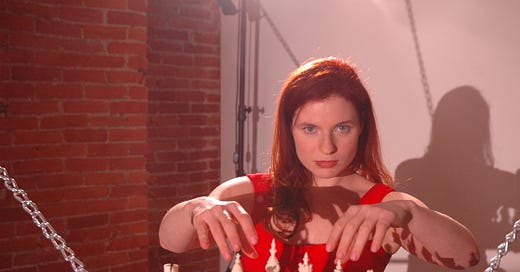Have a Heart: Flush Draws and Bias
You may think all poker suits are created equal, but one has an edge.
In poker hand rankings, unlike bridge or spades, no suit outranks another. End of story? Not so fast.
In the practice of No-Limit Hold'em, there is one suit that has a small, but important edge over the others.
Hearts.
To explain why, we have to dive into subconscious biases which players make in trying to randomize.
Men outnumber women in poker, an effect that is especially pronounced at high stakes. While it’s no longer Women’s History Month, this affects us all, and all year-long. Hearts are for everyone, and the stereotype that they’re weak hurts both women and men. I could go off into a tangent about how professions that deal with care are not given the proper respect or renumeration, but this article isn’t about changing the world. This is about exploiting cognitive biases for cold, heart EV.
A large study based on survey data that I’ll link to in the footnotes showed that poker players prefer to play spades, clubs and diamonds more frequently, and more aggressively than hearts. A chart (RAFS—Relative Aggression Factor per Suit) shows the truth loud and clear. Poker pros do not play hearts with the same level of aggression as other suits.
This is not THAT surprising if you think about it. Poker is all about pressure and dominating. Hearts? They’re cute, sweet and sentimental.
I call this phenomenon FOHO (fear of hearts omission) and researchers measure it with a Passive Heart scale (PH factor).
Once you’re aware of FOHO, you too can exploit it.
Let’s say you open in late position, and your opponent calls in the big blind.
T ❤️5❤️3❤️
Are you afraid of this flop? Nope. Their range is relatively heartless. So you can play this much more aggressively than if the flop was clubs or spades.
With baby hearts like 6❤️5❤️, you can also play much more confidently preflop, knowing that if the board runs out in hearts, you are unlikely to get flush over flushed.
Take a board that runs out Q❤️ 3♣️ 4♠️ K❤️ 8❤️ Many players, and solvers recommending bluffing here with a heart blocker, especially an A❤️. But in truth, you don’t need a heart to bluff because your opponent has the heart flush so rarely. This is especially true because there’s a King and Queen of hearts on the board—even a player with a high PH factor will grudgingly play A❤️K❤️or Q❤️, but the board blocks both of these.
The takeaway? Play your hearts with your full heart. Because you’re the one who’s going to be making and bluffing the flushes that everyone else misses.
I give valuable tips like this on one of my favorite holidays because I love you all so much. I mean, I ❤️ you.
Update: Check the date of the post- this was an April Fools Joke!







This is a solid article, but symptomatic of a broader trend in poker analysis writing which can miss a key confounding variable. Specifically, the breakdown neglects to control for RSP — Relative Suckoutiness Potential — as it varies across suits. A comprehensive meta-analysis of fourteen peer-reviewed studies (N=531,872 hands) indicates, with statistical significance (p = 0.022), that spade-based flush draws exhibit the lowest realization rate relative to expected equity. Although the data for other suits yields less conclusive results, the perceptual bias among players to generalize from the spade anomaly is predictable and arguably rational.
April Fools!